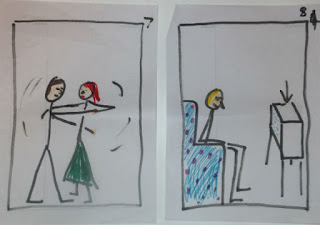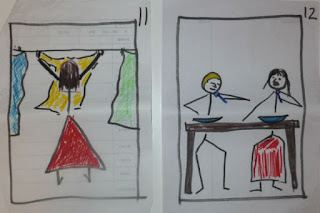The most valuable, and most used, resource that I have is not one that is easy to duplicate quickly, but it is one that you can build up as you go and will, if your career in teeaching is a long one, prove very useful.
It's pictures. Not just any pictures but a large bag of credit card sized pictures that have all been laminated on both sides. They have been gathered from all kinds of sources. Some have been printed from the internet, others have been cut from TV guides and magazines. Many have been taken from shop catalogues where you can find all kinds of pictures of clothing, household items, toys, gardening equipment - thousands upon thousands of things.
I have pictures of all of these things, not to mention animals, landscapes, monsters, robots, aliens, flowers, abstract paintings, interactions (TV guides are good for these). Altogether I have several thousand that I have built up over the past ten years or so.
You can start more modestly by always making a few for each lesson.
If you do not have access to a laminator you can still do it with sellotape. Simply print (or stick) the pictures onto a piece of A4 size paper. Cover it top to bottom on both sides with wide strips of tape. (If you overlap by half the width of the tape it takes longer but gives a much more duarable result.) Trim the edges and cut it up into the small pictures you need.
I use these pictures in many different lessons. You can use them as prompts for charades (as in my last lesson plan), for drawing or describing activities, simply to show to students as vocabulary items or (as we will see in a later lesson plan) to get the students to write or tell detailed and complex stories.
Whenever you need student prompts it's a good idea to take the extra time to make them this way and add to your pile of pictures. You will need to make them robust enough for the rough handling they will get in multiple classes anyway so you might as well build them to last and keep them forever.











